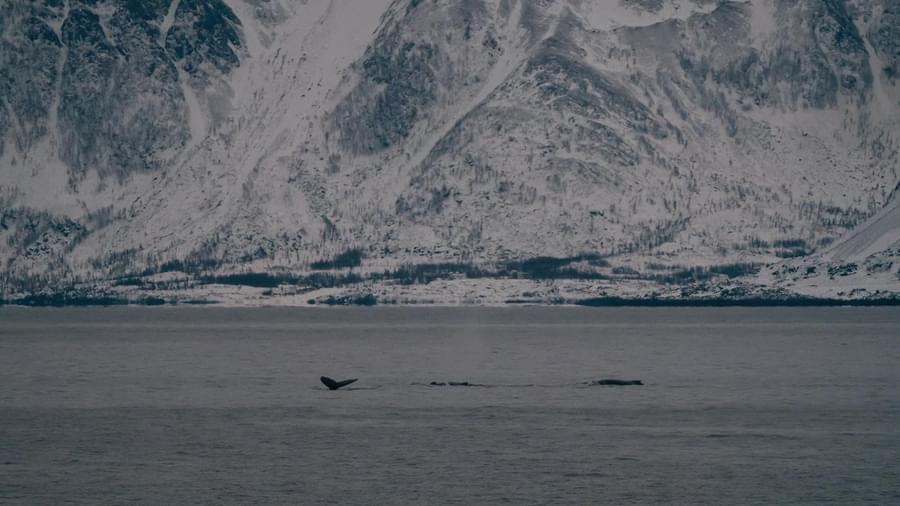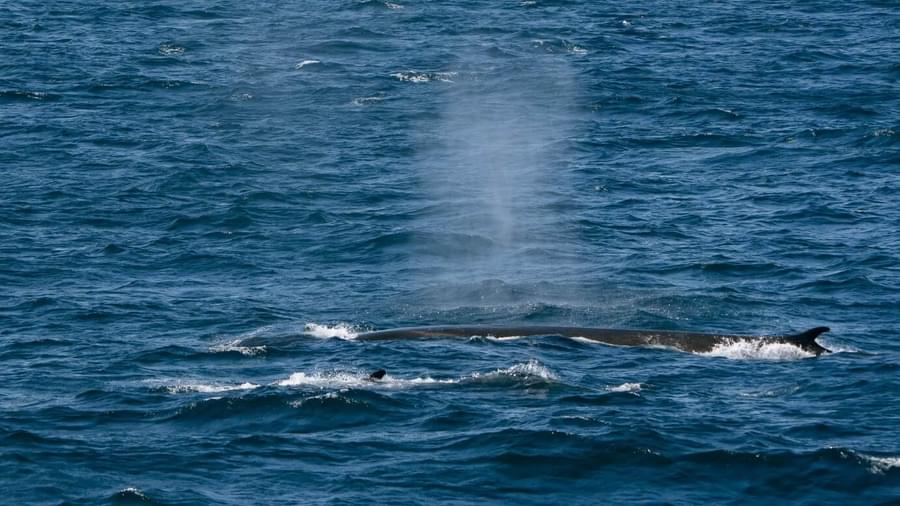Hello to you all - I am Louisa Mooij, and for just over a year, I’ve had the amazing privilege of working as a permanent Ocean Conservationist along the Norwegian coast.
The MS Otto Sverdrup travels mostly between Hamburg and the North Cape. When I started as an Ocean Conservationist in September 2022, I was pretty confident that we would have tons of sightings. Surely the oceans could not be empty? Well, turns out they were! After four weeks of working on board, we had one day with harbour porpoises and one pod of pilot whales that disappeared after three seconds. It can be challenging to keep up the spirits and to entertain guests with whale facts if we never even see them. Luckily, people always love hearing about cetaceans, even if we’re not seeing them! But in my fifth week, I could finally witness first-hand how humpback whales migrate. Sailing into the fjord Skjervøy on one cold November morning, we were greeted with blows everywhere. Winter whale season had properly started!

Humpback whales and orcas along the Norwegian coast follow the migration of herring. In the middle of winter, most herring gather in Skjervøy. This hasn’t always been the case. Herring used to migrate to waters just under Lofoten, but recently the migration pattern shifted towards the north. Skjervøy is where we can now find herring, and with them, the winter whales feeding on them.
Throughout the whole winter we could always find cetaceans in and around Skjervøy. In the dimly lit morning hours, we mostly encountered humpback whales, but orcas and fin whales made their appearance too. As the season progressed, the amount of cetaceans started to decline slowly, until in March the seas were empty again and sightings were sparse.

During my first cruise in June 2023, the tide turned, and there were many sightings. In summer, herring is found along most of the coast, although more abundant in the northern part of Norway. All kinds of species were spotted during just one cruise: harbour porpoise, minke whale, pilot whale, white-beaked dolphin, orca, humpback whale, fin whale and even two surprising sperm whales! However, as summer progressed, the amount of whales decreased once more. In August and September, I visited the area around North Cape three times, and we saw a lone humpback whale. Two weeks later, no humpbacks, but a pod of orcas. Two weeks later, not a single cetacean!

Consistently monitoring areas like this is incredibly valuable for safeguarding cetaceans. If these waters were not being monitored, we would never have known that the winter whales had shifted their winter feeding grounds from Lofoten to Skjervøy. Moreover, fin whales have only been seen in winter during recent years. By continuing to monitor trends like this, we can identify where potential problems arise and so better protect cetaceans. Will the winter whales continue to move up, or will they stay in Skjervøy? What happens if the winter whales reach the far top of the European continent, and they cannot move further? Will more fin whales appear in winter? And does that mean the populations are doing better, or that their feeding grounds have moved? My year on Otto Sverdrup is almost finished, but I am very grateful that I was able to watch over the change in Norwegian seasons, and with that. changes in presence of whales. Hopefully questions like these can be answered in the future, with ORCA continuing to look out for whales and dolphins on the Norwegian coast.

